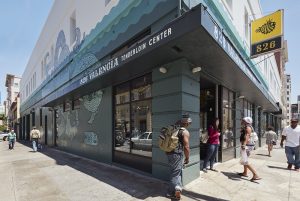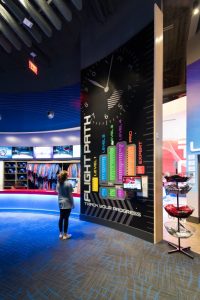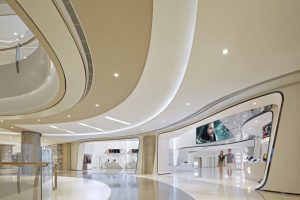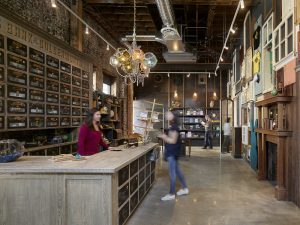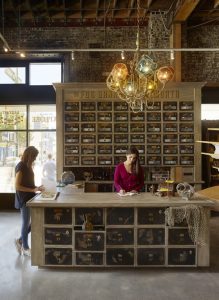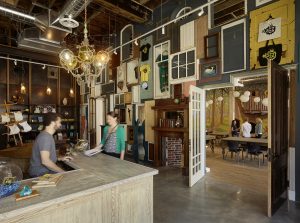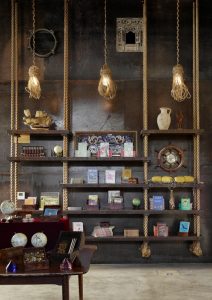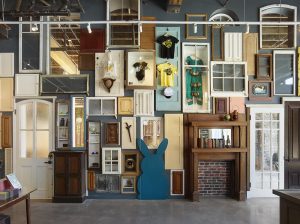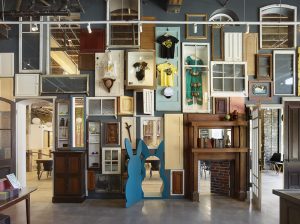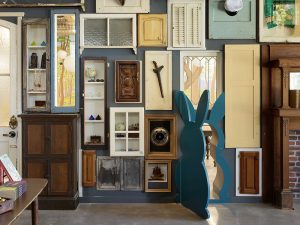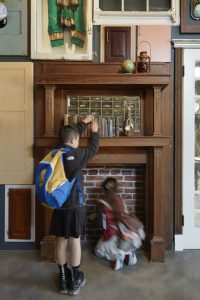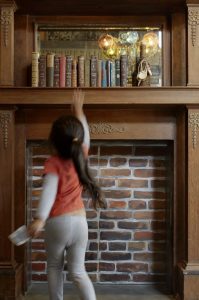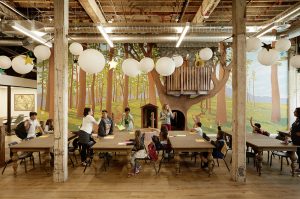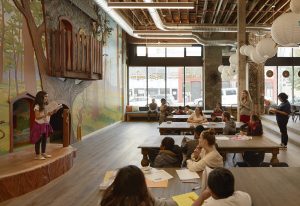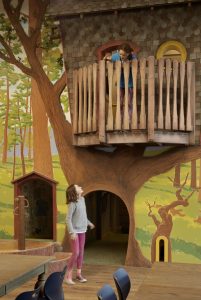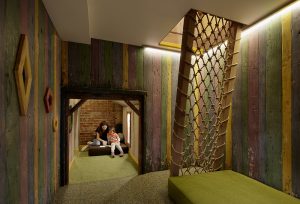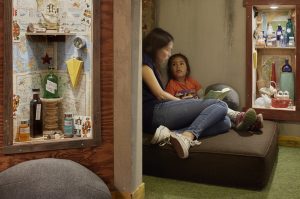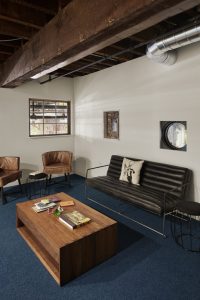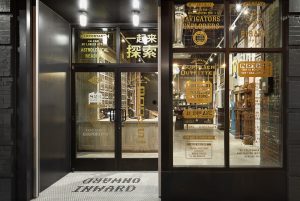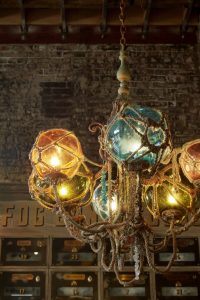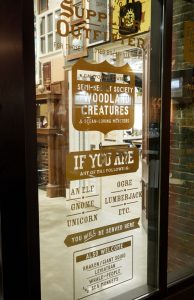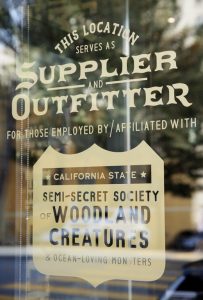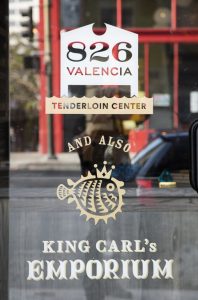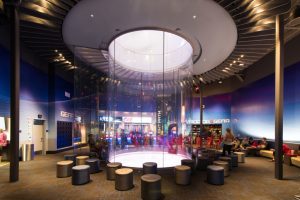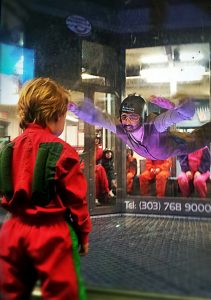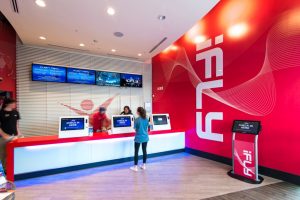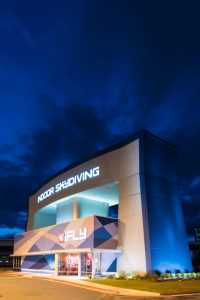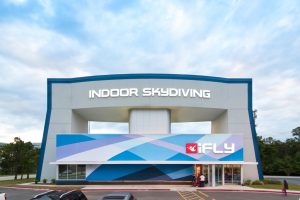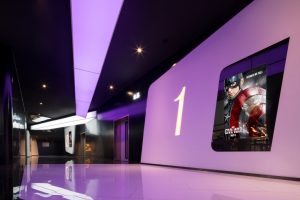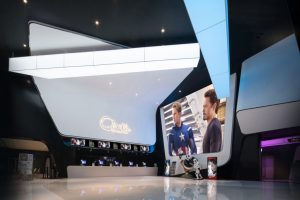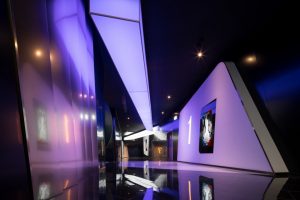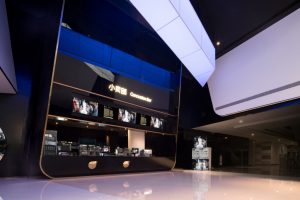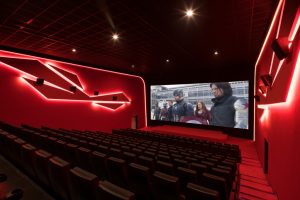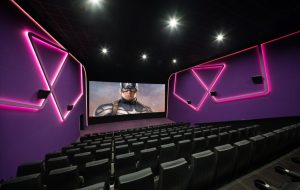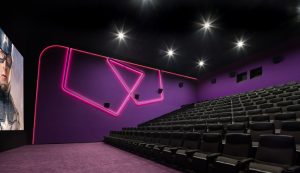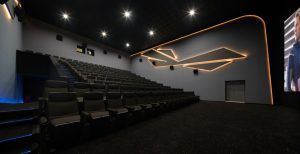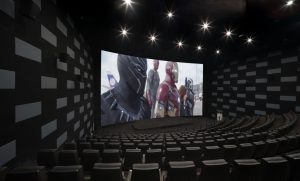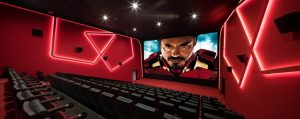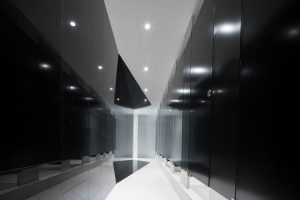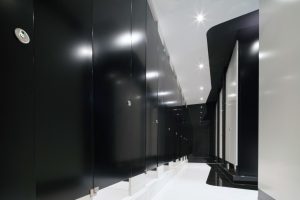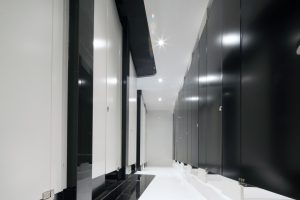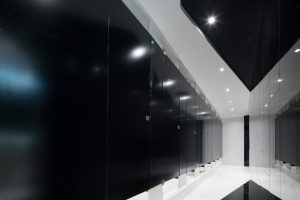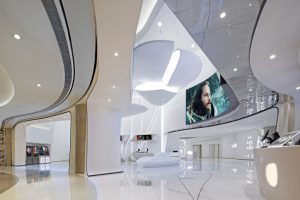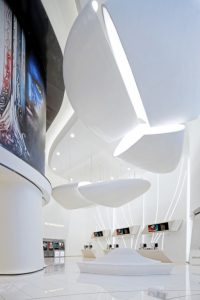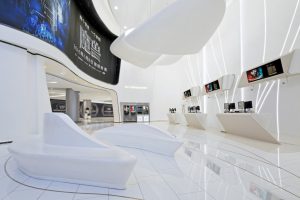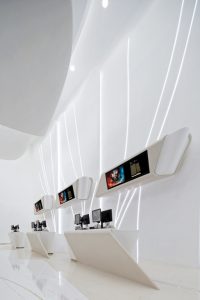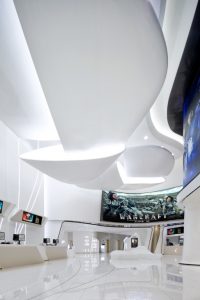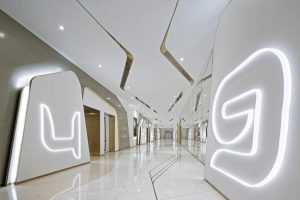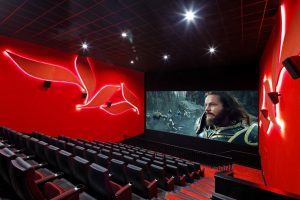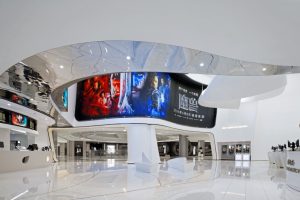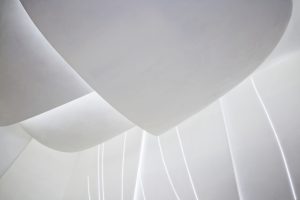In recent years, stores have begun evolving into more than just places to shop. It’s important to keep customers coming back for more, and what better way than by offering an unforgettable experience? Entertainment or experiential concepts have existed for a while, but now more than ever, they’re providing those immersive interactions customers are craving.
Food and beverage retailers (just one form of entertainment retail) earned more than $65 billion in sales by December 2016, according to the National Retail Federation (Washington, D.C.), while apparel and accessories stores pulled in about $34 billion.

826 Valencia, photography: Matthew Millman, San Francisco
OPENING THE DOOR
When a liquor store with a seedy reputation ended its lease on a prominent corner of San Francisco’s Tenderloin District, 826 Valencia (San Francisco) took over the spot, much to the neighborhood’s delight.
According to Jonas Kellner, a San Francisco-based architect, the brand had identified the neighborhood as being among the most financially neglected in the city, and also one with “the greatest number of children, per capita, of any community in the city,” he says. “There was a great alignment of need, from both the students and the opportunity for this area.”
Advertisement
Gensler’s San Francisco office, along with several other design firms, worked cooperatively on the concept.
Catering mostly to youngsters and curious passersby, the space functions as both a retail store and a tutoring/writing lab for underprivileged students. Unusual graphics on the façade draw people in, where they’re met with a series of visual moments: a trap door that releases a spray of bubbles, for example, and a light fixture that appears to have been dredged out of the sea, says Janice Cavaliere, design director, Gensler.
826 Valencia’s founders also have an original pirate-themed location, while this locale focuses on the narrative of a globetrotting pufferfish named “King Carl.”
Offering everything from books to quirky toys like “ogre dental floss,” the store is the gateway to the writing lab, which is accessible through a wall of doors. The wall is made up of about 70 unusually shaped doors, 40 of which are functional. “We took clients there recently, and adults were crawling through the bunny-shaped door and loving every minute of it,” says Cavaliere.
The writing lab is a calming, nature-inspired space, with a tree house and cozy nooks and crannies for reading and writing. Beyond the obvious structural challenges in creating a wall of doors, the safety of the tree house was also a concern, and a playground consultant was called in to assess its construction, according to Kellner.
While the retail component of 826 Valencia may be small compared to its main offerings, the experiences work in tandem to help recruit additional volunteers and solicit donations, as well as provide a safe, exciting place for children to learn.
Advertisement
“Every detail is designed to support this wacky story and take you out of your element,” says Cavaliere. “A lot of that happens through the eclectic materials we chose to work with, the surprise moments and the funny, unusual merchandise. It’s also analog, which these days is very unique. When we talk about experiential retail, it doesn’t have to be digital. It’s a very atypical retail experience, in that it exists to highlight the student programs.”

iFly, photography: Luis Ayala/Courtesy of Stantec
FLYING HIGH
If you’re terrified of heights or planes but have always dreamed of skydiving, iFly (Austin, Texas) might be the destination for you. Supporting its brand promise of delivering “the dream of flight to everyone,” its proprietary flight chamber produces up to F5 tornadic winds that make plane-less skydiving a reality.
According to CarloMaria Ciampoli, associate, senior designer for Edmonton, Alberta-based design firm Stantec, most customers book their sessions online, and once they arrive, they’re briefed and suited for flight. “It was a deliberate move to hide the flight chamber; it’s something we slowly reveal to the customer,” says Ciampoli. Customers typically get two flights, up to one minute each, equivalent to roughly two-and-a-half jumps from a real airplane.
The experience has the potential to change each visit, which helps keep customers returning long term. “The more time you spend in the tunnel, the more control you have and the more scenarios are available to you, as having learned those skillsets,” says Larry Weeks, senior associate, Stantec. “It gets more engaging and rich as an experience. There’s an ‘experiential return on investment.’ ”
Advertisement
iFly’s accessibility to a wide age range is also a big draw. Weeks explains that families and novices are the primary demographic (along with a smaller percentage of military and actual skydivers), since everyone is on an equal playing field, from ages 3 to 100-plus, unlike some other family-friendly activities.
Six elements are at the heart of a retail concept’s longevity, says Weeks: gender inclusivity, multigenerational appeal, low barriers to exhilaration, return on “experience” investment, cultivating community and being difficult to replicate.
With entertainment retail, careful consideration of concept is extremely important, Weeks explains, as “one problem with some experiential retail concepts is that [they aren’t] hard for someone to replicate,” he says. “With iFly, there’s so much technology and incredible accrued knowledge … that it’s a very difficult thing to reproduce.”


White Futura (left) and Beyond Future (right), photography: Hu Wenkit, Shanghai
ON THE SILVER SCREEN
Owned by one of the largest cinema chains in China, Beyond Future (Wuhan, China) and White Futura (Shanghai) cinemas were built consecutively and differ aesthetically, while reflecting a similar design philosophy.
Both designed by Alexander Wong Architects (Hong Kong), Beyond Future features a black palette with pops of color and strong, angular edges, inspired by classic sci-fi films like “Ex Machina” and “The Matrix,” as well as Russian constructivism and Italian futurism, explains Alexander Wong, chief designer, Alexander Wong Architects.
Conversely, White Futura is clad in a white palette with curving features. Inside its lobby, an abstract magnolia sculpture hangs from the ceiling “like an exploded spacecraft,” says Wong.
The complex designs posed challenges, namely with color choices in Beyond Future (finding a material that was easy to maintain and keep clean), while in White Futura, the magnolia sculpture (reportedly the size of a large helicopter) was difficult to hang and balance properly.
Wong strove for timeless and flexible designs that could work with the changing movie rosters. “Theaters and cinemas are not like any other experiential spaces,” says Wong. “For a [theater] to work effectively, the design is only a background, and the theme is affected by the films being shown at the time.”
ENTERTAIN ME
Experiential and entertainment retail comes down to engaging the five senses. Deloitte’s (New York) recent report, “The retail transformation: Cultivating choice, experience, and trust,” explains that vertically integrated retailers like Victoria’s Secret and Apple can request higher prices by offering in-store experiences. For others, adding an experiential element might be as easy as starting an after-hours cooking club, for example, if you sell kitchen accessories. And if done correctly, Deloitte suggests, it can help boost customer loyalty or become a source for new ideas.
“We’re acting all too often like [entertainment retail] is a new phenomenon targeted at millennials, who are more experientially focused than others,” Weeks says. “But if you look at successful retail, even back to the inception of shopping centers, they’re incredibly experientially rich places. These desires have existed and they’ve always brought people together.”
PROJECT SOURCE LIST (826 Valencia)
Retailer
826 Valencia, San Francisco
Design
Jonas Kellner, lead architect, San Francisco
Gensler, San Francisco: Kelly Dubisar, design director; Janice Cavaliere, design director; Ian Young, designer; Marissa Everling, junior designer; Samantha Lewis, junior designer; Ilanit Cohen, junior designer; Emily Shields, brand design; Marcus Hopper, project manager; (BRANDING AND GRAPHIC DESIGN) Jill Robertson, creative direction, copywriting; Rob Alexander, creative direction, design, illustration, copywriting; Jason Schulte, creative direction; Reva Parness, account direction; Cindy Wu, project management and production management; Will Ecke, design, illustration; Brittany Waldner, design; Dominique Mao, design and implementation; Mimi Chao, design; Heather Beck, production design; (OTHER) Valerie Veronin, project manager
MKThink, San Francisco
Interstice Architects, San Francisco
Tipping Structural Engineers, Berkeley, Calif.
Branding and Marketing
BBDO San Francisco, San Francisco
General Contractor
BCCI Construction Company, San Francisco
Flooring
Muse and Company Inc., Berkeley, Calif.
Cash Wrap
Raven Mahon, Oakland, Calif.
Rope Shelving
Dylan Gold, San Francisco
Lighting
Paganini Electric, Oakland, Calif.
Orion Chandelier, Santa Ana, Calif.
Philips, Amsterdam
Gensler, San Francisco
Fixtures
Jonas Kellner, San Francisco
Exterior Murals, Signage
Office, San Francisco
Window Coverings
3M, Minnesota
Photography: Matthew Millman, San Francisco
PROJECT SOURCE LIST (iFly)
Retailer
iFly, Austin, Texas
Design
Stantec, Edmonton, Alberta: Larry Weeks, principal, CarloMaria Ciampoli, associate, iFly lead brand designer; Shawn English, senior associate; Joshua Brewinski, senior interior designer; Jeff Weber, senior environmental graphic designer
Architect of Record
Hodges Architecture, Farmers Branch, Texas
Photography: Luis Ayala, Houston; Courtesy of Stantec
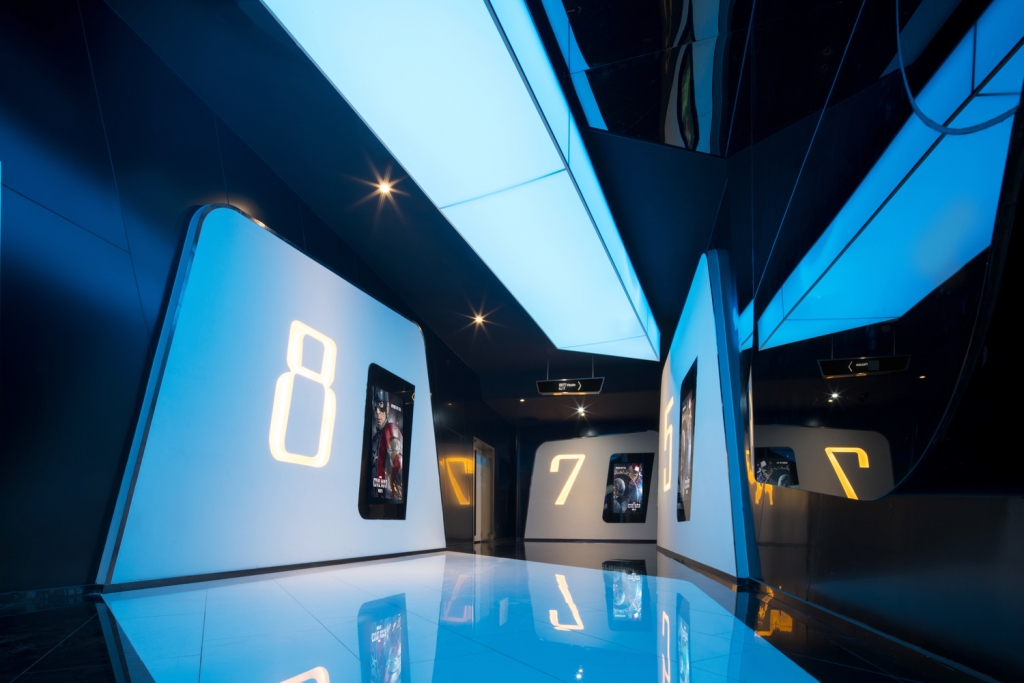

 Photo Gallery1 week ago
Photo Gallery1 week ago
 Headlines4 days ago
Headlines4 days ago
 Headlines1 week ago
Headlines1 week ago
 Headlines2 weeks ago
Headlines2 weeks ago
 Headlines1 week ago
Headlines1 week ago
 Designer Dozen1 week ago
Designer Dozen1 week ago
 Headlines1 week ago
Headlines1 week ago
 Headlines1 week ago
Headlines1 week ago





